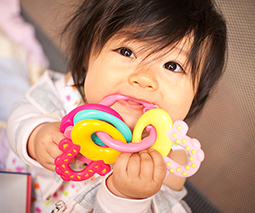Mummy Tummy vs Muffin Top! 4 things you need to know about abdominal separation

There’s nothing quite like being asked if you’re pregnant again mere months after giving birth to make you feel sad about the state of your body. No, you’re not pregnant – but thanks for asking! – it’s just that pesky Mummy Tummy that’s signalling all the wrong messages, and won’t budge, no matter what you do.
In the latest episode of Bellies, Bits and Babies, physiotherapist and women’s pelvic floor expert, Heba Shaheed is tackling all things Mummy Tummy with physiotherapist, Jo Murdoch from The Physiotherapy Clinic.
What causes Mummy Tummy?
In a nutshell, Mummy Tummy, or lower belly bulge, is caused by the abdominal separation that occurs during pregnancy – it’s not just extra fat around the middle. It’s an actual physical problem that can be improved with the right instruction.
Getting a little technical, Jo explains exactly what abdominal separation is. “The connective tissue [fascia] that runs down the centre of our abdominal wall is called the linea alba and it’s that piece of tissue has been stretched, and in some cases stretched beyond its elastic limit – so it has lost what we call tensile strength. The problem with it is that it is actually an important attachment site for our abdominal muscles. We have got four abdominal muscles and they all attach into this fascia. We need this piece of fascia in order for our abdominal wall to work.”
So basically abdominal separation is the result of that piece of connective tissue being stretched.
Mummy Tummy vs Muffin Top
If you’re wondering whether abdominal separation is possibly your problem – as opposed to those months of eating for two – you can check yourself with a simple exercise.
Jo suggests the following steps: “Start by putting your hands around your belly button above and below. What you’re feeling for is space and depth, so if you can push your fingers down in between your two muscles, there is what we would call too much laxity in the tissues; the tissue’s too floppy. It should be quite taut to put your fingers there.
“Start by lying down. If you try and start to lift your head or contract your abdominals, then you’ll get a better appreciation for what that tissue’s doing, and if it feels spacious and floppy, there is a separation there. The other thing that might be handy to do is if you are lying down, pop your legs down straight, lay your hand over your belly and lift one leg up off the ground – if you feel your tummy bulging into your hands, there’s a dysfunction there and likely there’s a separation there too.”
Close the gap – or not?
Once abdominal separation has been identified as the underlying cause of that unflattering and persistent lower belly bulge, the conversation usually goes one of two ways.
Medical professionals often dismiss the condition altogether, Jo says. “[Women are] often dismissed by the medical profession with, bad luck, it’s just aesthetic. Get on with it.” In other words, you’ve had a baby; you have to expect some wear and tear on your body. End of story.
Or for women who don’t want to accept that this is now their new body shape, historically they would usually come into contact with a physiotherapist or fitness professional who would work with them to close the gap by bringing the two side of the abdomen back together.
But current research shows that we should be less fixated on reducing the gap and more focused on restoring overall function, because this will improve everyday movement.
“If you do have a gap, it doesn’t really matter,” says Heba. “What matters is, are you able to stand, sit, move, walk, run, exercise … do everything that you want to in life without this gap, or this abdominal separation, holding you back? What is important is that you are able to do all these things, and even if you do have that 2cm gap, when you actually activate your muscles, it’s all taut and strong, and it’s protecting you. So I guess it’s almost like a paradigm shift that we have to make as women, and also as health professionals, that we need to move our focus away from what it should look like when we touch it to what it should feel like and how we’re actually functioning in life.”
Mummy Tummy confirmed. Now what?
If your abdominal separation is bothering you, it’s never too late to take action. Heba says she sees women who have been living with the condition for years. With a personalised exercise program that is followed regularly and consistently (10 minutes every day is all it takes, swears Heba!) improvements are definitely possible.
There is no reason to put up with Mummy Tummy when you don’t have to. It’s important to find a physiotherapist who is experienced in addressing these issues, but then you can get started on banishing that bulging belly.
You can find more pelvic health tips and tricks for from Heba Shaheed in our new weekly podcast, Bellies, Bits and Babies. In six practical weekly episodes, Heba shares her expertise to improve women’s pelvic health before and after childbirth.
You can listen to Bellies, Bits and Babies with Apple Podcasts and Google Podcasts











